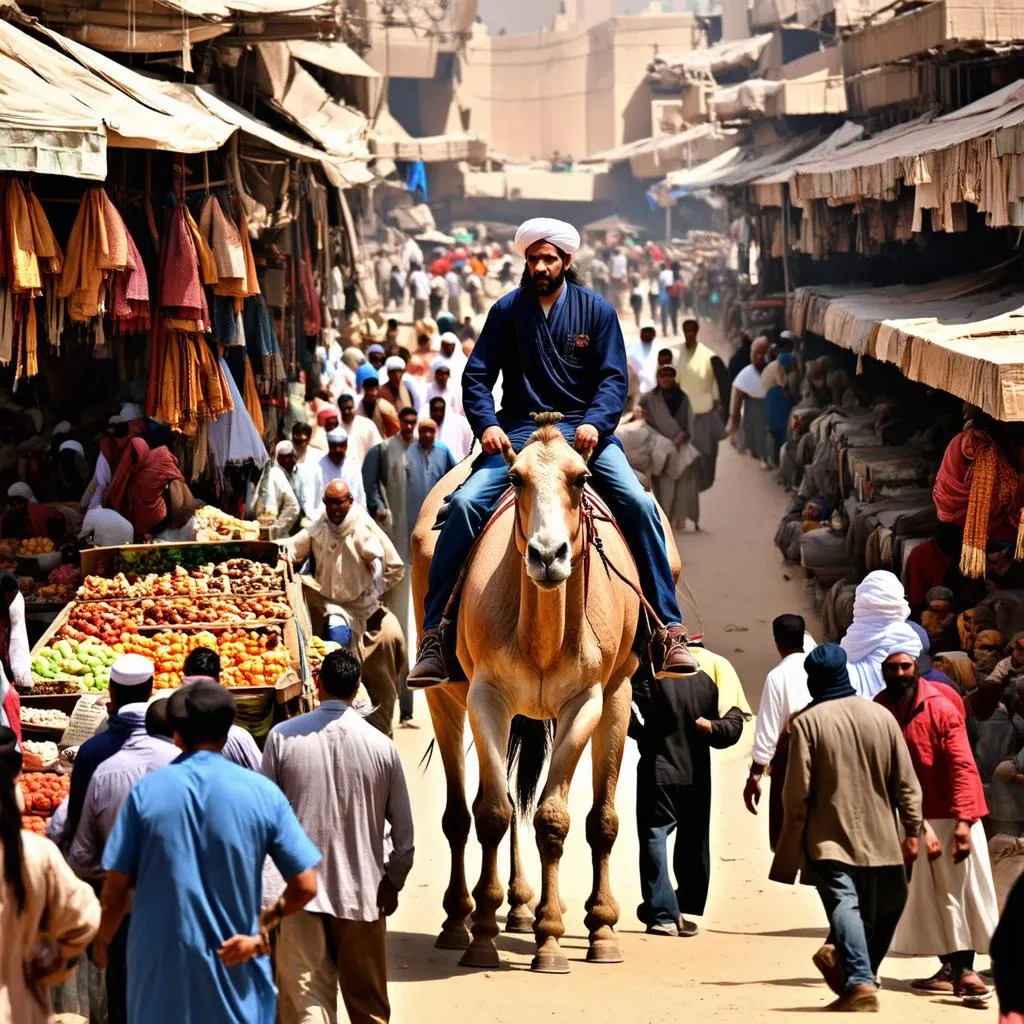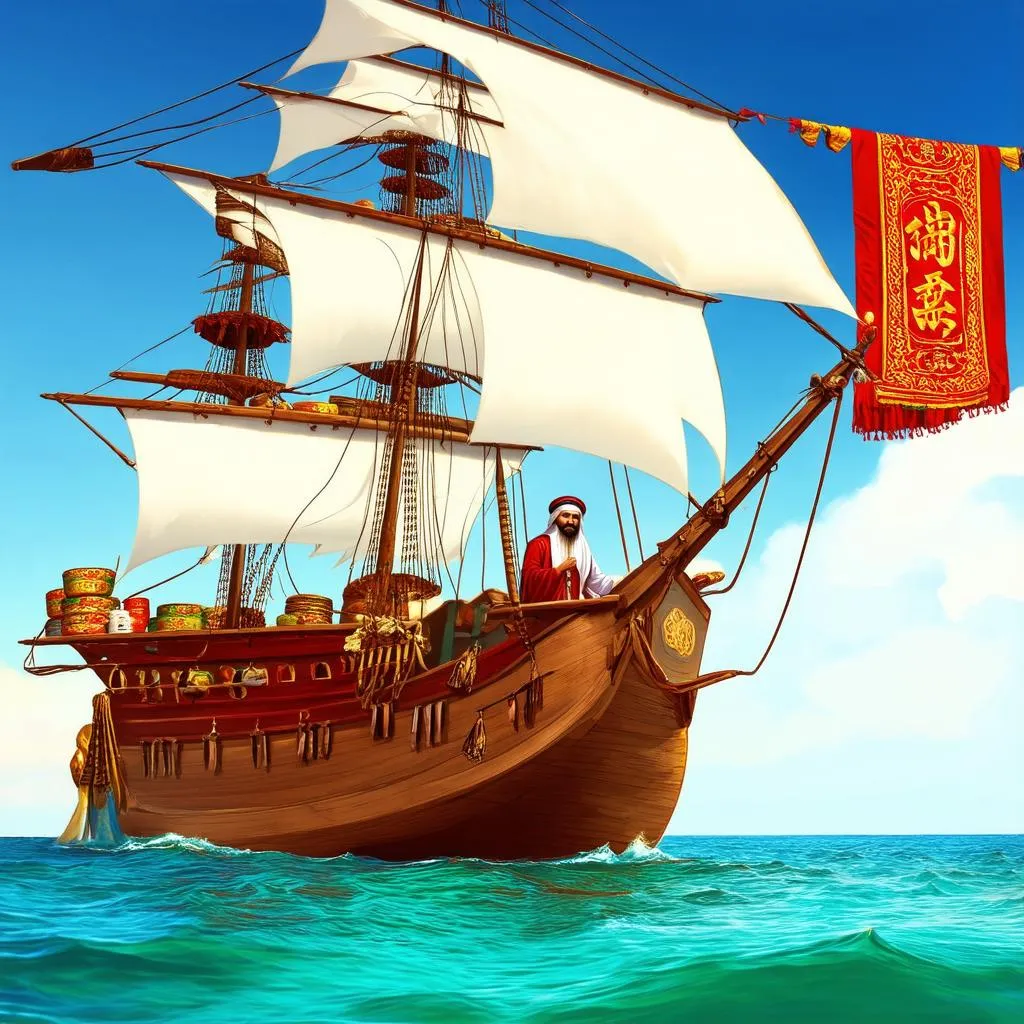Have you ever felt the urge to just pack your bags and explore the world? To witness firsthand the diverse cultures, stunning landscapes, and architectural marvels our planet holds? For Ibn Battuta, that urge wasn’t just a fleeting thought—it was a way of life. This 14th-century Moroccan scholar embarked on an epic journey that spanned decades and covered over 75,000 miles, making him one of history’s most prolific travelers. But when exactly did Ibn Battuta embark on this incredible adventure? Let’s delve into the timeline of his explorations and uncover the secrets of his extraordinary travels.
Setting Off on an Unprecedented Journey: Ibn Battuta’s Early Travels
In 1325, at the tender age of 21, Ibn Battuta left his hometown of Tangier, Morocco, driven by a thirst for knowledge and a deep desire to complete the Hajj, the pilgrimage to Mecca. Little did he know this journey would mark the beginning of an adventure that would consume the next 30 years of his life.
His initial goal was clear: reach Mecca. Traveling eastward across North Africa, he traversed the rugged terrain of the Atlas Mountains, the shifting sands of the Sahara Desert, and the bustling cities along the Mediterranean coast. Imagine the vibrant sights and sounds of places like Tunis, Alexandria, and Cairo, each leaving an indelible mark on the young traveler.
 Ibn Battuta in Cairo
Ibn Battuta in Cairo
Expanding Horizons: Beyond the Hajj and Across Continents
After completing the Hajj, Ibn Battuta could have easily returned home. But the travel bug had bitten him, and his curiosity knew no bounds. Instead of turning back, he ventured further east, exploring the Arabian Peninsula, Persia, and Mesopotamia. He marveled at the architectural wonders of Baghdad and Isfahan, delved into Islamic scholarship in Shiraz, and experienced the hospitality of the Bedouin tribes in the Arabian Desert.
His journeys didn’t stop there. He sailed down the east coast of Africa, encountering Swahili city-states like Kilwa, known for their trade in gold, ivory, and spices. He even ventured inland, reaching the fertile lands of the African interior, where he observed diverse cultures and customs.
A Global Odyssey: From Eastern Europe to Southeast Asia
Ibn Battuta’s travels weren’t confined to the Middle East and Africa. His wanderlust took him north to the Crimean Peninsula, where he encountered the Golden Horde, a powerful Mongol khanate. He even ventured as far east as India, Southeast Asia, and China, witnessing the grandeur of the Delhi Sultanate, the bustling spice trade in Calicut (present-day Kozhikode), and the magnificence of the Yuan dynasty under Kublai Khan’s successors.
 Ibn Battuta in China
Ibn Battuta in China
Returning Home: A Journey’s End and a Legacy Forged
After almost three decades of continuous travel, Ibn Battuta finally returned to Morocco in 1354. He had amassed a wealth of knowledge and experiences, encountering diverse cultures, navigating treacherous terrains, and witnessing some of the most significant events of his time.
Upon his return, he dictated his extraordinary journey in a travelogue known as the Rihla, a valuable historical document that provides invaluable insights into the 14th-century world.
FAQs: Unraveling the Mysteries of Ibn Battuta’s Travels
How long did Ibn Battuta travel?
Ibn Battuta’s travels spanned an incredible 30 years, from 1325 to 1354.
Why did Ibn Battuta decide to travel?
While completing the Hajj was his initial motivation, Ibn Battuta’s thirst for knowledge, desire to explore new lands, and passion for experiencing different cultures fueled his extensive travels.
How did Ibn Battuta travel such vast distances?
Ibn Battuta utilized various modes of transportation, including camels, horses, donkeys, boats, and even his own two feet, depending on the terrain and customs of the regions he traversed.
What were some of the challenges Ibn Battuta faced during his travels?
Ibn Battuta’s journeys were fraught with challenges, from harsh weather conditions and treacherous terrains to political unrest and encounters with bandits. However, his determination, adaptability, and resourcefulness allowed him to overcome these obstacles.
Where can I learn more about Ibn Battuta’s travels?
To delve deeper into Ibn Battuta’s fascinating adventures, explore his travelogue, the Rihla, and visit reputable travel websites like travelcar.edu.vn for more information on historical travel routes and destinations.
Beyond Ibn Battuta: Planning Your Own Adventures
Inspired by Ibn Battuta’s epic journey? Why not embark on your own exploration, even if it’s closer to home?
- Explore the historical cities of Morocco: Discover the vibrant culture and stunning architecture of Marrakech, Fes, and Chefchaouen, retracing some of Ibn Battuta’s early footsteps.
- Embark on a spiritual journey to Mecca: Experience the Hajj pilgrimage for yourself, following in the footsteps of millions of Muslims throughout history.
- Discover the hidden gems of Southeast Asia: Immerse yourself in the rich culture, breathtaking landscapes, and delicious cuisine of countries like Thailand, Vietnam, and Malaysia.
Remember, travel is more than just visiting destinations; it’s about embracing new experiences, connecting with different cultures, and expanding your understanding of the world. As Ibn Battuta himself once said, “Traveling – it leaves you speechless, then turns you into a storyteller.”
What stories will your travels inspire?